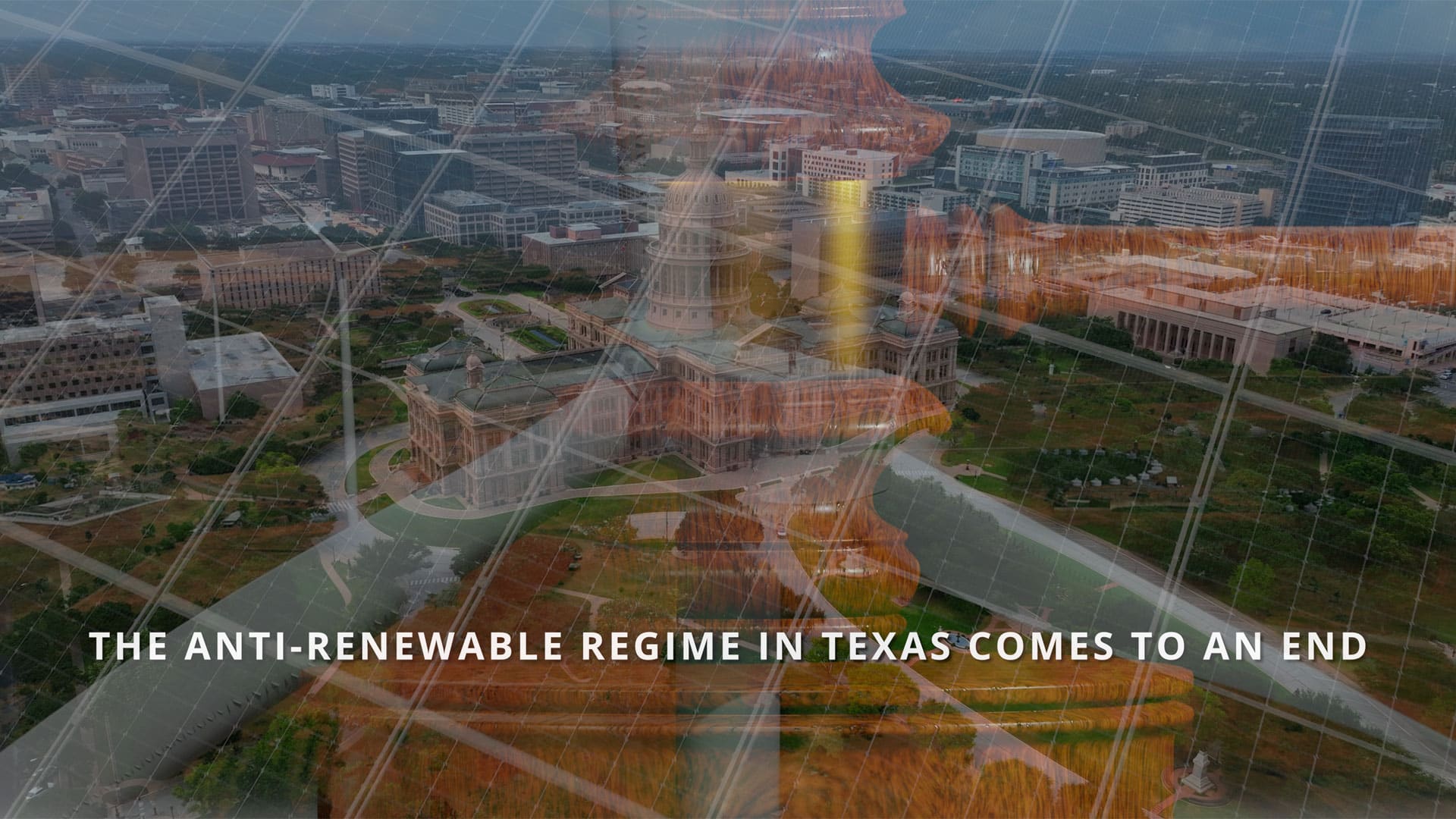
The latest legislative session in Texas ended on May 29th, with good news for clean energy in Texas. Recently, we covered Texas lawmakers who were on a crusade to hinder renewable energy development in the state. By increasing permitting requirements for wind and solar to an unreasonable degree, lawmakers were hoping to create so much uncertainty about projects securing permits that they would no longer be financed at all.
Suppressing renewable energy comes as a response to wind and solar growing in Texas at faster rates than any other state, thus threatening traditional fossil fuels. The same anti-renewable lawmakers have pushed an agenda this session to bolster fossil fuels, specifically natural gas power plants, instead of allowing clean energy sources to continue to grow organically in the state.
The 88th Session
In the latest session, more than a dozen anti-renewable energy bills were debated, some with dire consequences to the future growth of renewables in Texas. Fortunately, only a few bills ended up making it through the process, and those that would’ve caused the most harm to the clean energy industry thankfully died. The proposed discriminatory permitting program failed to pass, ensuring that renewable energy projects will continue to secure permits and funding.
The measures that did end up passing were amended into bill HB 1500, which now heads to the Governor to be signed. These measures include:
- adding transmission costs to certain renewable projects,
- requiring renewables to subsidize the construction of new fossil fuel plants (called “firming”) starting in 2027,
- making renewables pay higher “ancillary services” fees,
- and ending the state’s renewable energy requirement (which is not very consequential since Texas hit that requirement long ago).
While these measures still hinder renewables disproportionately in comparison to fossil fuels, renewable energy activists are consigned to take this session as a win, for the results could’ve been much worse for clean energy capacity building in Texas. One hopes that in the future such anti-renewable agendas will not make it this far in the state legislative process.
Rural Communities and Republican Counties Benefit from Renewables
The majority of residents in rural West Texas welcome new multimillion-dollar solar and wind farms to their area. While the projects don’t create many jobs, they do pay the landowners whose land they’re leasing for their installations. Depending on the location and length of the contract, landowners in West Texas, where wind and solar farms thrive, could receive between $16 million and $33 million over the lifetime of a 100-megawatt wind farm, according to a 2023 report by University of Texas research scientist Joshua Rhodes. Revenue from an equally powerful solar farm could be between $5.2 million and $28 million. As one farmer explained to the Texas Tribune, “If you don’t own a [wind turbine], they make a rumbling, swishing sound that’s loud like a jet plane. If you do, it sounds like ‘ka-ching, ka-ching, ka-ching.’”
Additionally, school districts in rural counties have received significant tax breaks for renewable energy projects under the Chapter 313 program. A total of 115 out of 254 Texas counties have school districts that received tax breaks under this program, which was created to attract investment in less populated, more rural counties. Interestingly, school districts in counties that supported Trump in the 2020 presidential election (by a larger margin) received six times the amount of money from the program as counties with more Democratic voters. These counties also tend to be more rural. The additional revenue collected has helped school districts improve their facilities by repairing aging buildings and athletic fields.
Renewables Help Meet Demand and Keep Costs Low
You may be thinking, “but how does wind and solar generation in West Texas benefit me?” The answer lies in the fact that these renewable energy sources help alleviate the state’s reliance on fossil fuel plants that may not be able to meet demand during peak times such as when heat waves roll through Texas. Last summer, renewables not only helped keep the power on during a scorching and early heatwave, they have also helped keep costs low. Prices for natural gas and coal were high amid a worldwide energy crunch, but renewables – powered by the wind and sun – have no fuel cost, and thus acted as a hedge against high energy prices.
Every Home that Goes Solar Helps
Locally, going solar helps your community by reducing strain on the grid. With more distributed energy sources available, energy from far away, traveling along vast transmission lines, experiences less stain. This is because localized energy sources can create energy for homes and businesses surrounding them, and thus the electricity doesn’t need to travel far. This also decreases the likelihood of power outages and decreases transmission costs, thus decreasing the overall cost of electricity.
 Every home or business that decides to go solar thus benefits not only themselves (through lower electricity costs and higher energy reliability), but their community as a whole. Was this enough to make you consider going solar? Browse our website today for more information and to receive a free quote. Have more questions? Our representatives are here to answer all of your specific questions and guide you on your way towards energy independence. Go solar with NATiVE and #TakeYourPowerBack!
Every home or business that decides to go solar thus benefits not only themselves (through lower electricity costs and higher energy reliability), but their community as a whole. Was this enough to make you consider going solar? Browse our website today for more information and to receive a free quote. Have more questions? Our representatives are here to answer all of your specific questions and guide you on your way towards energy independence. Go solar with NATiVE and #TakeYourPowerBack!

































[…] were introduced by Republican legislators with support from the fossil fuel industry. Despite this, almost none of these bills passed, showcasing the resilience of green energy in the state. According to Michael Webber, this […]